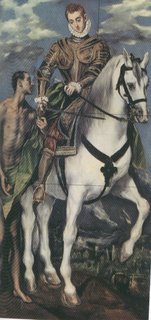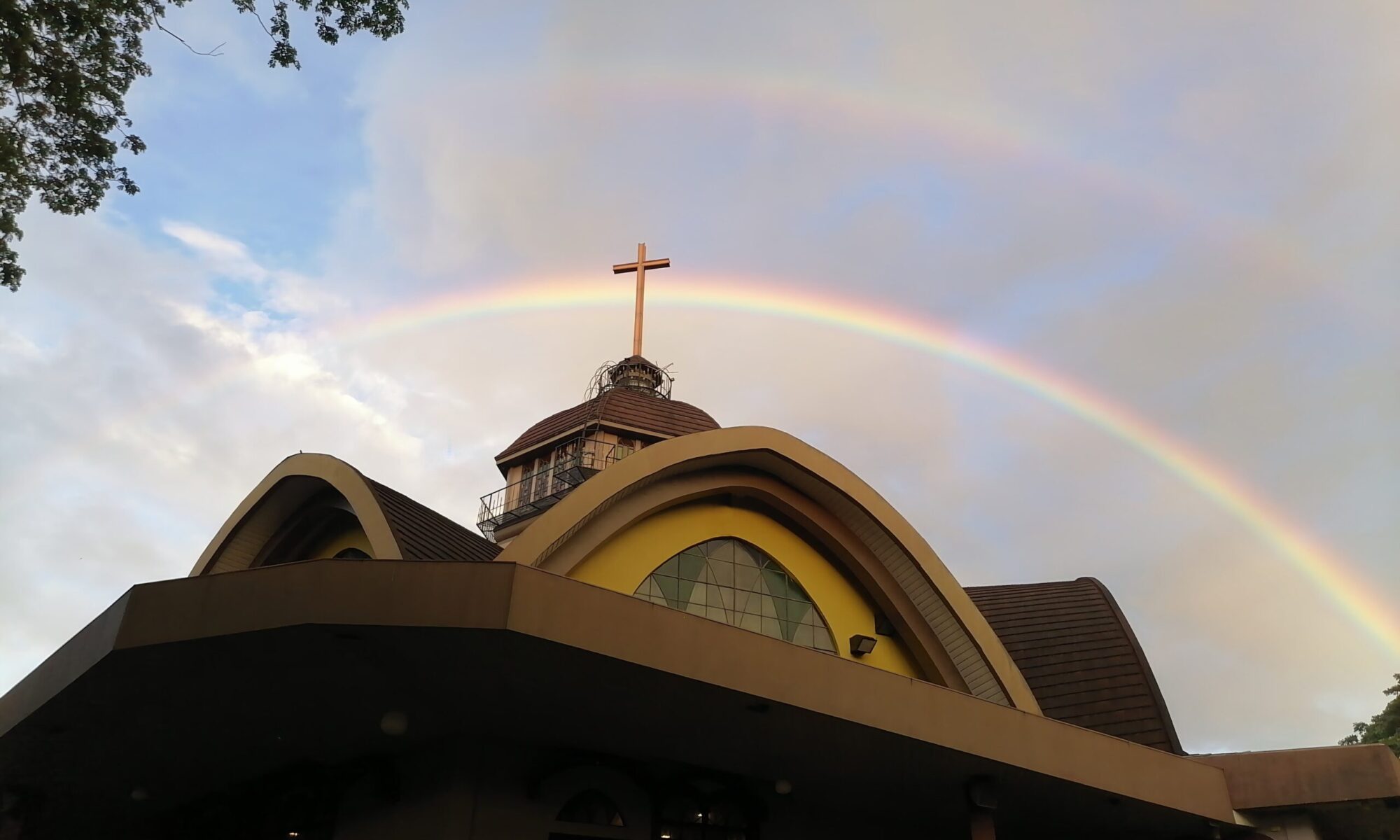 Pope Benedict in his “Deus Caritas Est” mentioned two groups of saints. On one side he mentioned St. Martin of Tours and on the other, he grouped St. Ignatius, Vincent de Paul and Teresa of Calcutta among a few.
Pope Benedict in his “Deus Caritas Est” mentioned two groups of saints. On one side he mentioned St. Martin of Tours and on the other, he grouped St. Ignatius, Vincent de Paul and Teresa of Calcutta among a few.
He mentioned St. Martin of Tours who, as a young Roman soldier, was attracted to Christianity because of the conversion of Constantine the Great.
He recalled Martin as a Roman soldier who met a shivering, half- naked beggar one cold day. Martin cut his coat in two and gave half to the beggar( the other half became a relic of the Frankish kings, referred to as “St. Martin’s cloak”). Then one night he saw Christ wearing the cloak he had given to the beggar. Still a catechumen he underwent instruction and was baptized. Converted by this experience he became a monk and became the disciple of the famous St. Hilary of Poitiers. He became a solitary at Liguge’ putting into practice the monastic life he had learned at Gallineria. Monks gathered around him and they established the Gallic Thebaid, a real laura, which later became the celebrated Benedictine Abbey of Liguge’. Martin lived there for 10 years in solitude. From there he would occasionally go out to preach against idolatry around the western and central part of Gaul. Later made bishop of Tours, he continued to have a hermit’s cell near the Loire where he founded another great monastery, Marmoutier, that exist up to now. His Episcopal administration was outstanding. He died at the age of 81 exhibiting a great life of humility and mortification. Greatly venerated in France, two basilicas were built in his honor but were destroyed, first by the Protestants and the second by the French reign of terror who bent their ire on this famous saint.
There are three points I would like to deal with in his life. First, St. Martin’s giving of his cloak to the half-naked beggar as a catechumen; the second is his becoming a monk and founding monastic houses and thirdly his becoming an excellent bishop (after being tricked by the people of Tours into the Episcopal office).
At first, St. Martin was moved by the initial grace of charity that propels a soul into the beginnings of Faith. This initial movement of Charity is Repentance with its three elements of fasting, good works and prayer. Giving half of his cloak to the beggar was the initial act of repentance.
Secondly, Martin becomes a monk. He founded monasteries while living the monastic life in its fullest. This is how he advanced through Faith, receiving the gift of knowledge; reached Hope where he attained understanding; and eventually reached Charity where he received the gift of wisdom or contemplation.
Thirdly, after he had reached Charity, he ruled splendidly as bishop, helped the people physically and spiritually. His work was the overflowing of Charity attained.
In the first stage, he performed the ‘works of mercy’ to begin his repentance that led to the virtue of Faith. In the second stage – his monastic life – he progressed from repentance to faith, hope and charity. In the third stage his works of Charity became an outpouring of his Charity already attained.
What is the difference between his helping the poor in the first stage and the third stage? In the third stage, like St. Vincent the Paul, acts of charity are done purely for love of God — or outpourings of Charity already attained; while in the first stage, they are done to start one’s personal sanctification. In the third stage, being an overflow of Charity — or Perfect Love already attained — the goodness of God is experienced by the recipient of such acts of charity, and therefore, is attracted to God and to the Catholic faith. St. Pachomius, a soldier like St. Martin of Tours, also became a monk and eventually started the cenobitic monastic movement, after being attracted to Christianity because of the charity shown him by some Christians.
Pope Benedict, in his encyclical, insists that bishops, like St. Martin, should be contemplatives, having reached Charity, before they can teach Charity, which is the essence of Christianity. In the early Church, monks who had reached Charity were the ones chosen as bishops. Otherwise, what will they teach? The Pope has shown us the way to reach it both in theory, in practice and in the examples of the Saints, like Martin, Ignatius and Mother Teresa. This is a daunting goal in an age where Charity has waxed cold. (Painting is “St. Martin and the beggar” by El Greco, 1597-99.)

